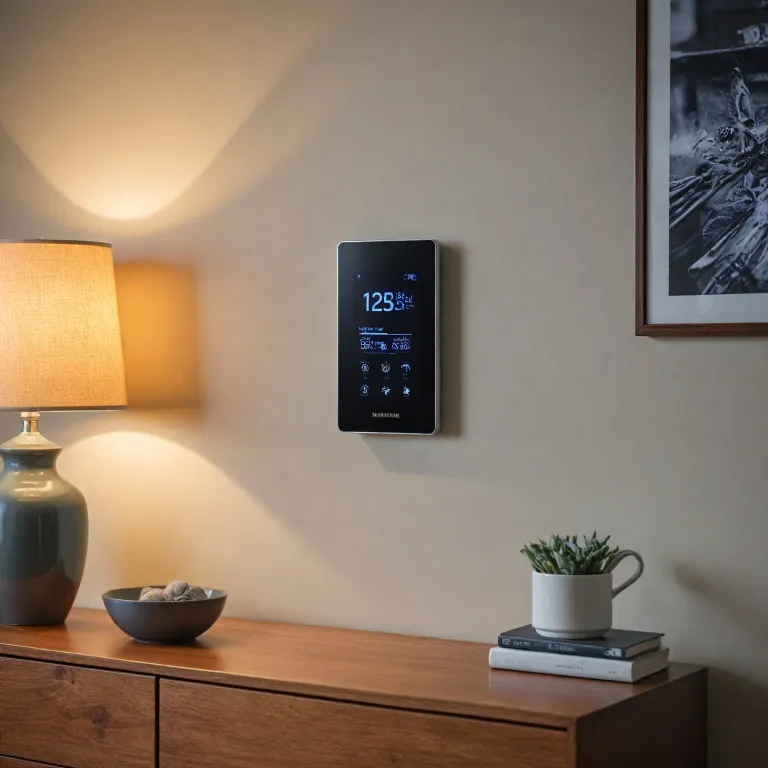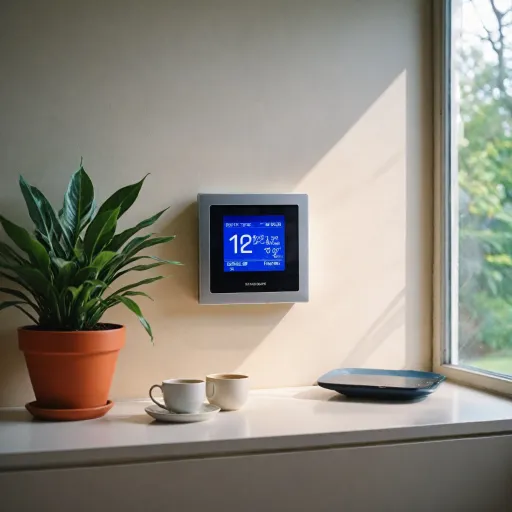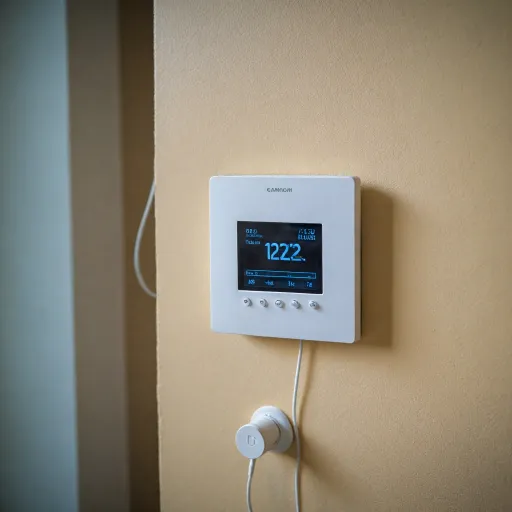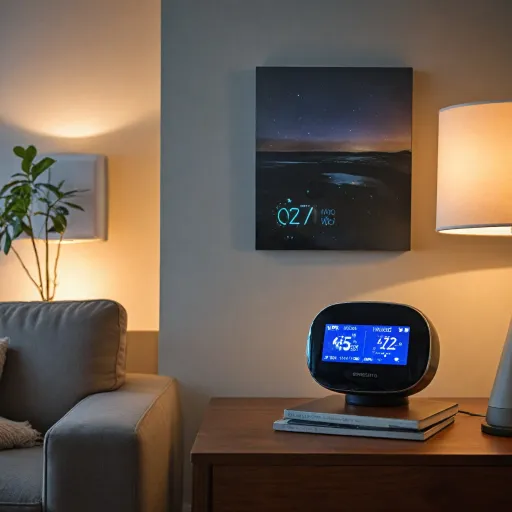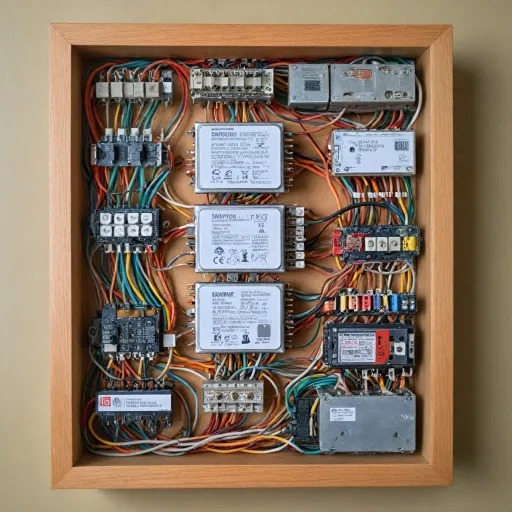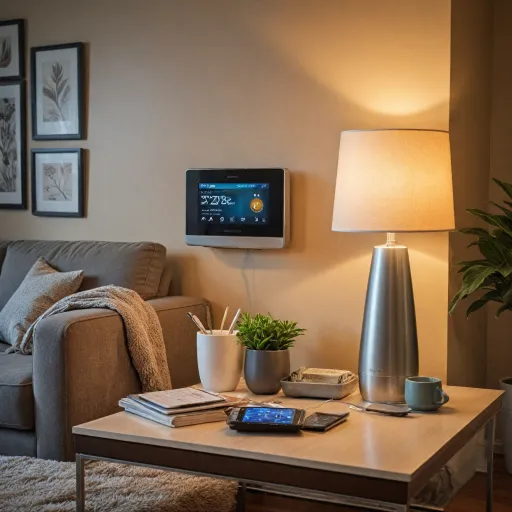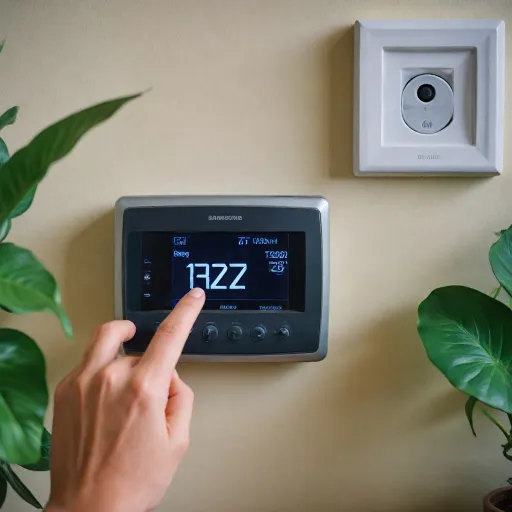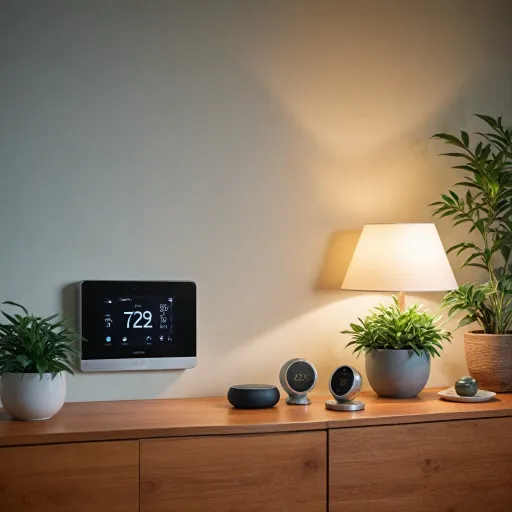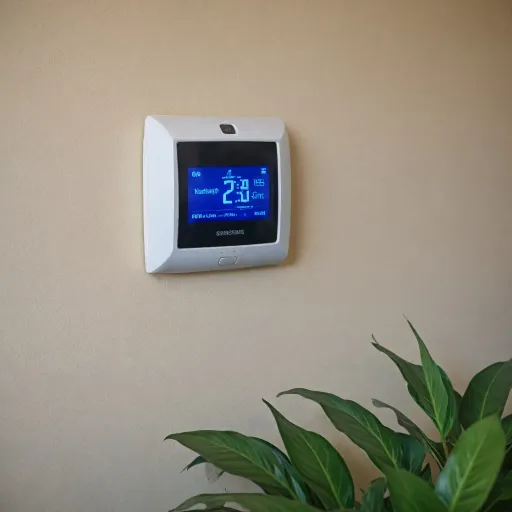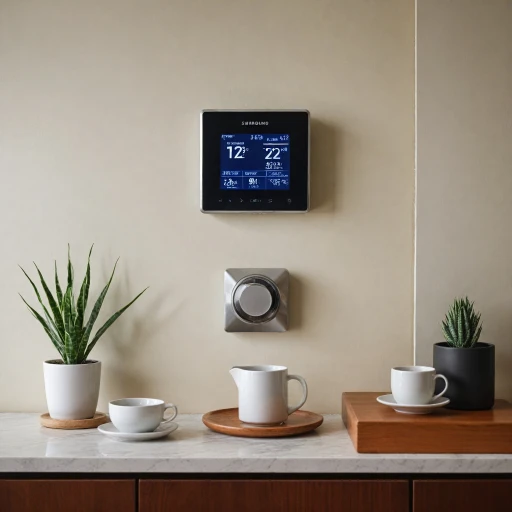
What is a Zigbee Thermostat?
Smart thermostats are a rapidly evolving technology, and among them, the Zigbee thermostat stands out for its enhanced connectivity features. But what exactly is a Zigbee-enabled thermostat?
Unpacking the Zigbee Protocol
The Zigbee thermostat leverages the Zigbee protocol, a wireless communication standard designed for low-power, short-range transmissions. Zigbee technology is particularly advantageous in smart home devices due to its efficiency in connecting multiple devices seamlessly. This means that a Zigbee thermostat can communicate with a range of smart home setups, from thermostatic radiator valves to humidity sensors without requiring significant energy consumption.
The Role of a Zigbee Hub
Setting up a Zigbee thermostat typically requires a Zigbee hub, acting as a central connecting point for all Zigbee-enabled devices in your home. This hub facilitates interactions among devices like the thermostat, enabling functionalities such as remote control via apps, and integrating with smart assistants like Alexa and Google.
A significant factor when considering a Zigbee thermostat is its compatibility with other smart home systems, which is an essential feature for those already invested in smart technologies. Additionally, features like programmable settings, touch displays, and voice control enhance user interaction and convenience, making it a top choice for those who value both technology and ease of use.
Understanding how Zigbee technology can transform your energy management with compatible devices is crucial for those wanting to optimize their home environment efficiently.
How Zigbee Technology Enhances Connectivity
The Magic of Seamless Connectivity
Zigbee technology has made waves in the smart home industry, significantly enhancing how devices communicate and function. In the realm of smart thermostats, it enables seamless connectivity and high operability with multiple smart devices, creating an integrated environment in your home. When considering a zigbee thermostat, you're investing in a network protocol known for its reliability and effectiveness in controlling and monitoring your home's temperature. Here’s how this technology enhances connectivity:- Low-Power and Efficient Communication: Zigbee is designed as a low-power, wireless mesh network standard. This means it efficiently connects a broad range of devices such as thermostats, sensors, and radiators while conserving energy. Your thermostat's interaction with other zigbee-enabled devices like humidity sensors or thermostatic radiator valves becomes more responsive, adapting to your environment’s needs effortlessly.
- Interoperability with Smart Devices: Zigbee smart technology allows your thermostat to interact with other smart home devices, including Alexa and Google integrations. You can use these integrations to enable voice control, giving you the convenience to adjust the temperature or check the status of your heating system hands-free. This interoperability amplifies the user experience since the thermostat seamlessly communicates with Amazon Alexa, smart apps for remote control, and other compatible products.
- Mesh Network Advantages: Unlike traditional Wi-Fi connections, zigbee harnesses the benefits of mesh networking. This means if one link fails, data can efficiently reroute, maintaining a stable connection among devices. This feature is especially beneficial in larger homes or spaces with obtrusive obstacles, ensuring your smart thermostat remains reliably connected.
Energy Efficiency and Cost Savings
Optimizing Energy Usage for Savings
Zigbee-enabled thermostats are emerging as a smart choice for those looking to manage energy consumption effectively while keeping costs in check. A key feature lies in their ability to offer energy efficiency, which translates directly into cost savings for users. With rising energy prices, controlling the temperature in your home with precision can make a substantial difference. These smart thermostats provide the capability to program temperature settings according to your schedule, ensuring that your heating or cooling systems are only active when necessary. This programmable feature is designed to enhance energy-saving efforts without sacrificing comfort. Responding to changes in users' routines or seasons, these devices give you the flexibility to make adjustments via an app or remote control. In addition to basic programming, Zigbee thermostats often come equipped with a temperature and humidity sensor. This added functionality provides a more comprehensive approach to maintaining ideal interior conditions. By accurately assessing the environment, the system ensures optimal operation of heating, ventilation, and air conditioning (HVAC) systems. Moreover, devices with voice control capabilities, compatible with platforms like Alexa and Google, offer convenience along with savings. This tech allows users to make quick adjustments verbally, leading to further energy efficiency. Moreover, many of these thermostats, like the Zen Thermostat, can be controlled through their touch display or wirelessly through Zigbee hubs. Using a product that seamlessly integrates with your existing smart home systems also aids in optimizing usage. The capability of Zigbee smart thermostats to work with devices such as a gas boiler or radiator valve allows comprehensive control over home energy use. Thus, efficient distribution and usage of energy, when paired with smart home integration, lead to impressive energy saving benefits. For those looking to set up a smart thermostat to maximize these benefits, a step-by-step guide on setting up your Honeywell WiFi thermostat provides thorough, user-friendly instructions.Compatibility with Smart Home Systems
Integrating Your Zigbee-Enabled Thermostat into a Smart Home Ecosystem
When considering a Zigbee-enabled thermostat, one of its standout features is its seamless compatibility with various smart home systems. This compatibility allows you to control your home environment with ease, utilizing existing devices and infrastructures. For starters, Zigbee technology integrates smoothly with popular smart assistants like Alexa and Google Assistant, offering voice control capabilities. Imagine adjusting the temperature through simple voice commands, adding a layer of convenience to your daily routine. This integration is not only limited to changing the settings but also includes accessing the thermostat's programmable features via apps. You can easily manage temperature settings on the go with remote control through an app, ensuring your home always feels comfortable when you arrive. Moreover, Zigbee technology is known for its ability to connect effortlessly with a vast array of smart devices, creating a comprehensive network within your home. This includes smart lighting, security systems, and other IoT devices that can be managed as a cohesive unit. For instance, coupling your thermostat with Zigbee-compatible radiator valves or thermostatic radiator controls can optimize energy use and enhance your home's energy efficiency. Additionally, the Zigbee smart hub acts as a bridge, enhancing the connectivity across devices. By integrating with a smart hub, your thermostat can communicate effectively with other smart devices, allowing for automation like temperature adjustments based on occupancy detected by humidity sensors or other inputs. Another aspect to consider is the array of options available on platforms like Amazon, where you can find various Zigbee temperature controllers, each offering unique features such as touch displays, programmable settings, and compatibility with different heating systems like gas boilers or water heaters. Overall, the integration of a Zigbee-enabled thermostat into your smart home setup offers flexibility and control, making it a valuable addition to any modern home ecosystem.Installation and Setup Considerations
Effortless Setup and Seamless Integration
Setting up a Zigbee-enabled thermostat might initially seem daunting, but with the right guidance, it becomes a simple, straightforward process. First, ensure you have a Zigbee hub, as it acts as the crucial link connecting your thermostat to a broad range of smart devices. This hub facilitates the seamless integration between your heating system, like a gas boiler or thermostatic radiator valve, and smart assistants such as Alexa and Google Home.Most products available on platforms like Amazon come with easy delivery options and detailed manuals that describe the installation process step-by-step. Typically, connecting a thermostat requires some technical knowledge about handling wires, but many smart thermostat models now offer wireless options too. Additionally, manufacturers provide free apps that guide you through the process with intuitive app-based instructions.
One essential consideration is the existing wiring of your home, as some smart thermostats require a C-wire, while others may function without. It is important to verify these requirements before purchase. Furthermore, compatibility with your heating system, such as water gas heaters or traditional gas boilers, is paramount to ensure seamless operation.
A programmable display allows users to customize their settings for optimal comfort and energy efficiency. Once set up, these thermostats offer remote control capabilities via an app, enabling temperature adjustments and energy monitoring from anywhere, using devices like a smartphone or tablet. Users also benefit from touch control options, enhancing user experience with ease of accessibility.
Lastly, when integrating with other smart systems such as Zigbee smart plugs, temperature controllers, and humidity sensors, the thermostat becomes a powerful tool in your home energy strategy. This integration can lead to significant energy saving and ultimately reduce the overall cost of ownership. Investing in a Zigbee thermostat not only offers convenience and advanced control but also contributes to a more energy-efficient home.
Security and Privacy Concerns
Addressing Security and Privacy in Zigbee-Enabled Thermostats
When evaluating smart thermostat options, security and privacy are critical concerns, especially with the integration of Zigbee technology. Zigbee-enabled thermostats are part of a larger network of connected devices, and while this offers numerous benefits such as enhanced energy efficiency, it also introduces potential security risks.
One of the primary security features of a Zigbee smart thermostat is its use of strong encryption algorithms. These ensure that data exchanged between the thermostat and other devices, like an Amazon Alexa or Google Assistant, is protected from unauthorized access. Encryption protocols help safeguard your temperature settings and other personal information from cyber threats.
Users should also consider the significance of frequent software updates for their Zigbee thermostats. Regular updates provided by manufacturers can address vulnerabilities, introducing patches that bolster security measures. It's advisable to enable automatic updates when possible for an effortless way to maintain your device’s defenses.
Moreover, many Zigbee thermostats allow for secure remote access through apps, which means you can control your home's temperature settings from anywhere, as long as you have internet access. This feature, while convenient, requires a stable and secure Wi-Fi connection. Implementing strong passwords and network encryption can help secure these remote interactions.
In terms of privacy, Zigbee thermostats keep personal data concerns at the forefront by enabling users to control how data is shared. Many connected devices, including thermostats, feature detailed privacy settings that users can adjust to suit their comfort level. It’s recommended to read through the privacy policy of the product and understand which data is collected and how it is used.
Considering these aspects, Zigbee-enabled thermostats offer robust security and privacy solutions, but it's also vital for users to adopt best practices to fully protect their home’s smart system. By staying informed about potential threats and implementing recommended security measures, users can enjoy the convenience and efficiency of a smart thermostat without compromising their security.
